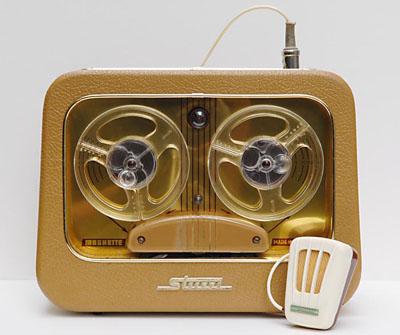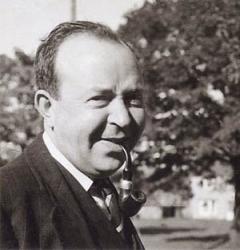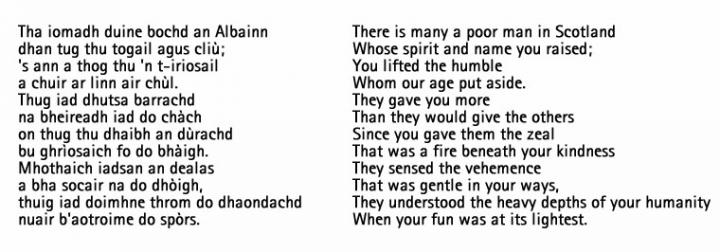Calum Maclean Project
The Calum Maclean Collection Online Catalogue Project aims to make a major collection of material central to Scottish Ethnology available in digital form as an accessible and flexible research resource.

Calum Maclean Collection Online Catalogue Project Brief:
Host: University of Edinburgh
Partner: University College Dublin
Description:
The Calum Maclean Collection Online Catalogue Project, funded by the Arts and Humanities Research Council (AHRC), aims to make a major collection of material central to Scottish Ethnology available in digital form as an accessible and flexible research resource. The collection consists of over 13,000 manuscript pages of transcriptions of Gaelic folklore and song from the fieldwork of Calum Iain Maclean (1915-1960) carried out mainly in the Scottish Hebrides as well as in the Scottish Mainland Highlands. Primarily the collection consists of tale-texts together with full-length autobiographies from two major storytellers. The texts will be encoded in XML using TEI format and presented dynamically online via a website through a searchable XML database. This will not only provide a powerful and adaptable contemporary resource for folktale research but also a major Gaelic language corpus.
The Project is based in Celtic & Scottish Studies at the University of Edinburgh, and is partnered with University College, Dublin.
The School of Scottish Studies Archives & Library
Manuscripts:
There are two main collections of Calum I. Maclean's manuscripts of fieldwork transcriptions. One collection is at the School of Scottish Studies at the University of Edinburgh while the other is at University College Dublin. In Edinburgh there are 28 notebooks (SSS MSS I-28) containing around 440,000 words and in Dublin there are 24, 19 volumes of transcribed oral transcriptions and five fieldwork diaries (IFC MSS 1026-1031, 1053-1054, 1111, 11129, 1153-1156, 1171, 1179-1183, 1300-1302) notebooks containing around 2,100,000 words. In all, there are roughly 2,500,000 words in total amounting to around 25,000,000 characters. This collection consists of over 13,000 hand-written pages of transcriptions of Gaelic folklore, primarily tale-texts along with two full-length autobiographies of two major Gaelic storytellers, Duncan MacDonald and Angus MacMillan.
Contact:
Principal Investigator:
Dr John Shaw


Calum Maclean:
Calum Iain Maclean (Scottish Gaelic: Calum Iain MacGhilleathain, 6 September 1915-17 August 1960), a Scottish folklorist, collector, ethnographer and author, was born in 1915 in Òsgaig, Isle of Raasay, Scotland, to a family of five boys and two girls to Malcolm MacLean (1880-1951), tailor, and his wife, Christina (1886-1974), daughter of Sorley Nicolson of Braes, Skye, and his wife, Isobel. His four other brothers were the famous Gaelic poet and scholar, Sorley MacLean [Somhairle MacGill-Eain] (1911-1996), a schoolmaster and classicist, John Maclean (1910-1970), and two general practitioners, Dr. Alasdair Maclean (1918-1999), and Dr. Norman Maclean (c.1917-c.1980). Isobel and Mary, their sisters, were also schoolteachers.
Maclean received his early education at Raasay Primary School and then Portree High School (1929-1935), Skye. Maclean then went to the University of Edinburgh (1935-1939) where he took a first in Celtic Studies under the tutelage of two famous Gaelic scholars, Professor William J. Watson (1865-1948), and his son Professor James Carmichael Watson (1910-1942). He won the McCaig and Macpherson scholarships which enabled him to enrol at University College Dublin where he undertook further study in Early Irish under Professor Osborn Bergin (1872-1950) and in Medieval and Modern Welsh under Professor J. Lloyd-Jones (1885-1965). At the outbreak of the Second World War, Maclean's studies came to a temporary halt and he had to cast around for some other means of livelihood. At first he worked in a factory in Clonmel, Co. Tipperary, and from there he went to stay in Indreabhán, just west of Galway City in Connemara. While domiciled there, Maclean began to take an interest in the local Gaelic traditions, inspired mainly by the influence and writings of Douglas Hyde (1860-1949). With relative ease Maclean acquired a particular skill in the modern Irish of the Connaught Gaeltacht and was appointed by Professor Seumas Delargy (1899-1980) as a part-time collector for the Irish Folklore Commission (Coimisiún Béaloideasa Éireann). During this period, Maclean turned his back on his Presbyterian upbringing and converted to the Roman Catholic faith. From August 1942 to February 1945, Maclean sent a considerable amount of southern Connemara lore to the Commission, amounting to six bound volumes. By April 1945, Maclean had been given a full-time appointment by the Commission in Dublin. During the next few months, Maclean learnt the craft of folklore, extracting excerpts from 19th century printed Scottish Gaelic tale collections and gaining experience in cataloguing.
On 19 December 1945, the Irish Folklore Commission sent Calum Maclean to the Hebrides with an ediphone recording device so that at least one serious attempt would be made at the scientific preservation of this material before the last Gaelic storytellers and folk-singers who had escaped the net of the 1872 Education Act had passed away. Maclean was fully conscious of the task that lay before him and applied himself to the work with gusto. An entry from a diary, which he wrote in Gaelic, gives an insight into his work as an ethnographer at this time:
Thòisich mise, Calum I. Mac Gille Eathain, a' cruinneachadh beul-airthris agus litreachas beóil ann an eilean Ratharsair am paraiste Phort-righeadh anns an Eilean Sgitheanach air an 19mh lá de 'n Dùdhlachd (Nodhlaig) 1945. Rugadh mi agus chaidh mo thogail anns an eilean seo. An uair a bha mise òg bha tòrr dhaoine anns an eilean seo aig a robh sgeulachdan agus seann-òrain nach deachaidh a sgrìobhadh sios riamh is nach téid a sgrìobhadh sios gu bràth. Tha an t-seann-fheadhainn an nis marbh agus thug iad gach rud a bha aca leotha do'n uaigh. Có dhiubh tha cuid de dhaoine ann fhathast a chuimhneachas bloighean de na h-òrain a bhiodh aca agus bloighean de'n t-seanchas eile cuideachd. Shaoil mi gu robh barrachd òran air am fàgail anns an eilean seo na bha de aon rud eile. Uime sin chuir mi romham na h-òrain a sgrìobhadh sios uile mar a chuala mi aig na daoine iad. Ach sgrìobh mi sios cuideachd gach rud a thachair rium. Tha fhios agam gu bheil sinn tri fichead bliadhna ro anamoch gu tòiseachadh air an obair seo, ach dh 'fhaoite gu sàbhail sinn rud air chor eigin fhathast, mun téid a uile a dhìth…
I, Calum I. Maclean, began two days ago to collect the oral tradition of the island of Raasay. I was born and reared on this island. When I was young there were many people here who had tales and songs which had never been written down, and which never will be, since the old people are now dead, and all that they knew is with them in the grave. There are still some people alive who remember some of the songs and traditions of their forefathers, and as it seemed to me that there are more songs than anything else available, I decided to write down those which I could find. I realise that we are sixty years late in beginning this work of collection, but we may be able to save at least some of the traditional lore before it dies out…
It was clear from Maclean's preliminary collection he made (mainly from his own relations) in Raasay that there was still a great deal to collect and, in light of this, the Irish Folklore Commission took the decision in 1946 to send Maclean back to his native land in order that he could continue his work in the field. Over the next four and a half years (from June 1946 to the end of December 1950), while still in the employ of the Commission, Maclean worked assiduously in collecting a further nineteen bound volumes of lore (amounting to over 9,000 manuscript pages) as well as his diaries, amounting to a further five full bound volumes (over 2,000 manuscript pages). It was during this period that Maclean collected the longest story ever recorded in Scotland, the 58,000 words of Alasdair mac a' Cheird (Alasdair son of the Caird), told to him in 1949 by Angus MacMillan. This almost doubled the previous "record" of the 30,000 words of Leigheas Coise Cein (The Healing of Kane's Leg), recorded from Lachlin MacNeill, an Islayman, by J. F. Campbell and Hector Maclean in 1870.
On New Year's Day 1951, Maclean formally began to work for the newly founded School of Scottish Studies based at his alma mater, the University of Edinburgh. Since being given this long over due institutional berth, the systematic collection of Scottish Gaelic and Scots folklore began in earnest through the avid work of Calum Maclean, the School's first appointed collector, Hamish Henderson (1919-2002), John MacInnes (1930-), to name but a few, and their successors. The very first recordings that he made for the School included no less than 524 Gaelic tales from a roadman encountered "in the dead of winter, and Lochaber lay white and deep in snow." The last that Maclean made were literally on his death bed.
Maclean was the first person to undertake the systematic collection of the old Gaelic songs, stories and traditions in the Highlands and Islands with modern recording apparatus. Therein lies the importance of his work. A good deal had been done previously in the way of collecting old stories in the Highlands by John Francis Campbell of Islay (1821-1885) and his collectors, but lacking any means of making mechanical recordings, their task of writing down such tales from dictation was a very laborious one, and J. F. Campbell himself admitted that his collection in no way exhausted the stories current in the Highlands "whole districts are yet untried, and whole classes of stories, such as popular history and robber stories, have yet been untouched."
Most importantly, Maclean spent a little over a year (from Summer 1951 to Autumn 1952) undertaking professional training at Uppsala University in Sweden which was then, as now, at the forefront of folklore methodology, cataloguing and archival techniques. Maclean benefited greatly by what he learnt at this institution as well as his time at the Irish Folklore Commission. Having studied under Professor Dag Strömbäck, he later set up an index system for Scottish folklore at the School of Scottish Studies based on the Uppsala one. Maclean's fieldwork experience, in-depth knowledge of Gaelic oral tradition and broad academic knowledge provided him with a unique combination of skills that were advantageous to collecting. In addition, Maclean had a remarkable facility to put people at ease and so gained their confidence. He stressed this observation in one of his articles that "for any folklore collector the crucial time is when contact is first made with the tradition bearer" and that "every folklore collector must be prepared to efface himself and approach even the most humble tradition bearer with the deference due to the high and exalted." Calum Maclean lived out this principle to the full, and so, with his easy-going personality coupled with a sometimes-mischievous sense of humour, managed to open many a door that would have otherwise been closed. Everywhere he went he found the best contacts and tradition bearers and by doing so he managed to gather in a vast amount of oral material straight from people's memories. Out of the hundreds of people recorded by Maclean, there were four storytellers that struck him as exceptionally talented: Seumas MacKinnon, known as Seumas Iain Ghunnairigh, (c. 1866-c.1946), from Northbay in Barra, Duncan MacDonald, Donnchadh Mac Dhòmhnaill 'ic Dhonnchaidh, (1882-1954), from Peninerine in South Uist, Angus (Barrach) MacMillan (1874-1954), from Griminish in Benbecula and John (The Bard) MacDonald (1876-1964) from Highbridge in Brae Lochaber.
Maclean was struck down by cancer in 1956 necessitating the amputation of his left arm the following year. Even with the onset of cancer that was to finish him, he continued to work and remain cheerful under extremely adverse circumstances that reflected the strength of character that belied his small stature. Sadly, Maclean's only major publication was The Highlands (1959), and what may be described as an uncompromising view of the Highland people, history and culture from the perspective of an insider, a Gaelic-speaking Scot, received many favourable critical reviews on publication. Apart from a modest amount of academic papers and popular publications, due to the amount of time spent in recording, and the concomitant task of transcription and indexing, Maclean's foremost legacy is his vast collection of mainly Gaelic oral tradition carried out in the field over a fourteen-year period (1946-1960). The vast majority of the collection was made in the Western Isles (in South Uist, Benbecula and Barra) and on the mainland Scottish Highlands. Maclean was always conscious of being a successor to those great collectors who had gone before him: John Francis Campbell of Islay, Hector Maclean (1818-1892), John Dewar (1802-1872), Alexander Carmichael (1832-1912), Fr. Allan McDonald (1859-1905), as well as many others. In some ways he surpassed them all.
At the comparatively youthful age of only 44, on 17 August 1960, Calum Maclean lost his battle against cancer and died in the Sacred Heart Hospital, Daliburgh, South Uist, Scotland. He was to have received, in September of that year, from the University of St. Francis Xavier at Antigonish, Nova Scotia - an institution with very strong Highland connections - the degree of LL.D., honoris causa, for recognition of his work for the preservation of Gaelic oral tradition. It was a fitting honour for a scholar - the one word that he pleaded not to have marked on his gravestone - who had spent so many long hours collecting in the field. He was buried in Hallan Cemetery, South Uist, an island that not only claimed him but one that he claimed to be his own. His brother, Sorley MacLean, wrote a moving elegy typifying for many the great loss felt at his untimely death:

Select Chronological Bibliography:
- 'Traditional Songs from Raasay and their value as Folk-Literature', The Transactions of the Gaelic Society of Inverness, vol. XXXIX/XL (1942-50), 176-92
- 'Sgéalta as Albain', Béaloideas: The Journal of the Folklore of Ireland Society, vol. XV (1945), 237-48
- 'Gaidheil Eireann agus am Beul-Aithris', Alba, vol. 1 (1948), 44-47
- 'Hebridean Storytellers', ARV: Journal of Scandinavian Folklore, vol. 8 (1952), 120-29
- 'Tales and Traditions among the Older Folk', Old People's Welfare Scottish Bulletin (July, 1954)
- 'Death Divination in Scottish Folk Tradition', The Transactions of the Gaelic Society of Inverness, vol. XLII (1953-59), 56-67
- 'Aonghus agus Donnchadh', Gairm, air. 10 (An Geamhradh, 1954), 170-74
- 'A Legend of the Cross,' ARV: Journal of Scandinavian Folklore, vol. 11 (1955), 150-51
- 'Hebridean Traditions', Gwerin: Journal of Folk life, vol. 1, no. 1 (1956), 21-33
- 'A Shetland Version of the Legend of Don Juan', Shetland Folk Book, vol. 3 (1957), 65-67
- 'Am Ministear agus an Claban', Scottish Studies, vol. 1 (1957), 65-69
- 'International Folk-Tales in the Archives', Scottish Studies, vol. 2 (1958), 113-17
- 'A Folk-Variant of Táin Bó Cúailnge from Uist', ARV: Journal of Scandinavian Folklore, vol. 15 (1959), 160-81
- 'A Variant of the Charm of the Lasting Life from Uist', Saga och Sed (1959), 75-78
- 'An Donn Ghuailleann', Gairm, air. 29 (Am Foghar, 1959), 67-71
- The Highlands (London: Batsford, 1959) [repr. Inverness: Club Leabhar, 1975; Edinburgh: Mainstream, 1990, 2006]
- 'Traditional Beliefs in Scotland', Scottish Studies, vol. 3 (1959), 189-200
- 'A Collection of Riddles from Shetland', Scottish Studies, vol. 4 (1960), 150-86 [with Stewart F. Sanderson]
- 'Fairy Stories from Lochaber', Scottish Studies, vol. 4 (1960), 84-95
- 'The Study of (the) Folklore', An Gaidheal, vol. 55 (1960), 80-82; 104-06; 117-18
- 'Is daor a cheannaich mi 'n t-iasgach', Scottish Gaelic Studies, vol. IX, pt. 1 (1961), 1-8
- 'Folktale Studies in Scotland', Internationaler Kongreß der Volkserzäh-lungsforscher in Kiel und Kophenhagen (19.8.-29.8.1959) (Berlin, 1961), 169-71
- 'The Last Sheaf', Scottish Studies, vol. 8 (1964), 193-207
Visit the Calum Maclean Project website:

